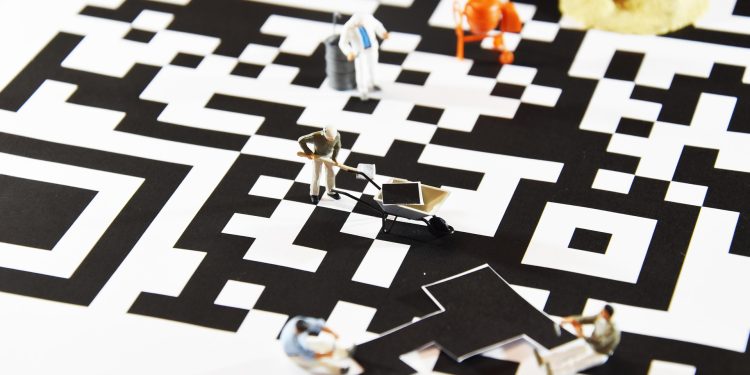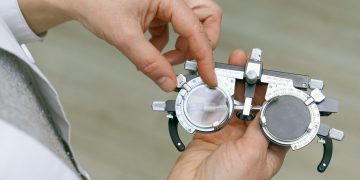Key Takeaways
- Barcodes are cost-effective, simple, and widely used in low-budget environments requiring basic tracking.
- RFID enables hands-free, real-time tracking with more data capacity and better durability—ideal for high-volume, complex operations.
- RFID systems offer enhanced security features, while barcodes are more prone to tampering and duplication.
- RFID's higher upfront cost is often balanced by long-term savings in labor, error reduction, and operational efficiency.
- The most effective systems may combine both technologies to match specific needs and constraints.
In a world increasingly driven by automation, efficiency, and real-time data, tracking technology has become more important than ever. Businesses today rely on systems that help them manage inventory, secure assets, and streamline operations. Two technologies that stand at the heart of this movement are Radio Frequency Identification (RFID) and barcodes.
The Origin Stories: Where It All Began
Let’s begin with a little context. Barcodes have been around since the early 1970s. Born out of a need to automate grocery checkouts, the familiar black-and-white striped codes became the universal language of inventory systems. Their simplicity, low cost, and reliability made them indispensable for retail, logistics, and even libraries.
RFID, though it seems like a more recent innovation, traces back to World War II. It was originally developed to identify friendly aircraft using radar. Decades later, RFID evolved into a commercial tool that allows data to be transmitted over radio waves without direct contact.
So while barcodes emerged from civilian retail needs, RFID has a military pedigree that later pivoted to commercial applications. This difference in origin helps explain their contrasting strengths.
How They Work: Not Just Black and White vs Invisible Waves
Barcodes are optical. A scanner reads the printed pattern by shining a light, and the reflection is interpreted as data. It’s a visual process—line of sight is mandatory. If the label is smudged, damaged, or obstructed, the system fails. It’s a bit like reading a street sign: if fog or grime gets in the way, you’re out of luck.
RFID, on the other hand, doesn’t need to “see” to identify. Tags contain microchips and antennas that communicate with RFID readers using radio waves. Depending on the frequency and power, RFID can detect tags from inches to several feet away—even through walls, boxes, or layers of clothing. Think of it more like sonar: soundless, wireless, and incredibly nimble.
This invisible mode of operation makes RFID a powerhouse in environments where traditional visibility just isn’t practical—warehouses, medical facilities, or anywhere bulk scanning is a necessity.
Human Interaction: Touchpoints vs Touchless Systems
When you use a barcode system, human interaction is a critical part of the process. Someone has to physically position the scanner in front of the code. Whether it’s a cashier at a checkout counter or a worker scanning inventory, the process is manual and labor-intensive.
RFID turns this concept on its head. It automates identification by allowing multiple tags to be read simultaneously, hands-free. A worker can roll a cart full of tagged boxes past a reader, and the system will log everything in real time. There’s no need to aim, scan, or pause. This hands-off approach isn’t just faster—it reduces errors and frees up human workers for tasks that require more brainpower.
In a way, RFID is like switching from dial-up to fiber optic. Once you experience the speed and efficiency, going back feels like a compromise.
The Cost Factor: Cheap Tags, Expensive Freedom
Barcodes are cost-effective—this is one of the biggest reasons for their ubiquity. A label costs pennies, and barcode printers and scanners are relatively affordable. This makes them ideal for businesses that need to manage a high volume of products on a tight budget.
RFID tags are more expensive, particularly when equipped with rewritable memory or extended read ranges. Active RFID tags, which come with their own power source, can cost several dollars apiece. Passive tags, which rely on the reader's signal for power, are cheaper but still pricier than barcodes.
However, the cost conversation shouldn’t end there. RFID can save money in other areas: reduced labor costs, fewer inventory errors, better theft prevention, and faster checkouts. It's the classic case of short-term spending versus long-term savings. What seems expensive at first might actually prove to be the more cost-effective solution over time.
Accuracy And Data Capacity: Simplicity vs Intelligence
A barcode is essentially a label with a single line of static data. Scan it, and it might tell you the product ID, price, or SKU. That’s all. Change any of that information, and you need to print a new label.
RFID tags can store far more data, including dynamic information. Some are even rewritable, allowing updates without physical relabeling. Imagine tracking the life of a product—its manufacture date, movement history, temperature exposure, and expiry—all stored on a single RFID chip. Barcodes simply can’t compete at this level of data richness.
This is where RFID shows its intelligence. It transforms basic tracking into a living, breathing digital twin of each item. From pharma to food logistics, this level of detail isn’t just helpful—it can be lifesaving.
Durability And Resilience: Fragile Prints vs Robust Chips
Barcodes are printed. They live or die by their visibility. A torn or dirty label can become unreadable, causing delays and confusion. In harsh environments—like factories, outdoor storage, or refrigerated transport—this fragility can become a serious liability.
RFID tags are built to last. Many are embedded in plastic casings, making them water-resistant, heat-tolerant, and shockproof. Some are even designed to endure extreme temperatures, chemicals, or crushing forces. They aren’t invincible, but they’re leagues ahead of their paper-based counterparts in terms of durability.
This toughness makes RFID ideal for industries like automotive, construction, oil and gas, or aerospace—where reliability isn’t optional, it’s essential.
Security And Anti-Counterfeiting: Open Book vs Encrypted Code
Barcodes are visible. Anyone with a scanner can read them. There’s no built-in encryption or authentication. This openness makes barcodes vulnerable to duplication or tampering.
RFID can be far more secure. Some systems use encrypted communication, making it nearly impossible to clone or spoof tags. This added layer of security is why RFID is often used in access control cards, passports, and expensive merchandise where counterfeiting is a real concern.
Of course, security is a spectrum. Not all RFID systems are bulletproof out of the box, but the potential for protection is significantly higher than what barcodes can offer.
Scalability And Real-Time Insights: Local Records vs Global Vision
With barcodes, your inventory system updates every time someone scans an item. This means your data is only as fresh as your last scan. It works well at small scales, but in fast-paced, high-volume environments, this lag can cause problems—stockouts, misplaced items, and inefficient audits.
RFID thrives on scale. It enables real-time tracking across entire facilities. Managers can get live dashboards of what’s where, when it moved, and who handled it. This visibility transforms supply chain management, making it proactive instead of reactive.
Think of it this way: barcode systems are like snapshots, while RFID delivers a live stream. When agility and responsiveness matter, RFID wins hands down.
Environmental Considerations: Paper vs Electronics
There’s also the question of sustainability. Barcode labels, though recyclable, are often printed on adhesive paper that ends up in landfills. RFID tags, being electronic, pose different challenges—they’re harder to recycle and often contain plastics and metals.
However, the environmental impact of RFID may be offset by its operational efficiency. Fewer lost items, fewer reprints, and longer product lifespans mean less waste in the long run. It’s a nuanced debate, but one that’s increasingly relevant in the era of green logistics.
Choosing The Right Tool: Not A Matter Of Better, But Of Fit
By now, it should be clear that this isn’t a story of one technology replacing the other. It’s about fit.
If you're a small retailer, a barcode system offers affordability and ease of implementation. If you're managing a hospital’s medical supplies or running a multinational warehouse, RFID offers scale, speed, and intelligence that barcodes simply can’t match.
Each has its strengths, and often, the best solution is a hybrid one—using RFID for high-value or fast-moving items, and barcodes for everything else. Knowing the strengths of each technology allows businesses to build systems that work smarter, not harder.
Final Thoughts
In the end, comparing RFID and barcodes is a bit like comparing a bicycle to an electric car. Both get you from point A to B. One is simple, cheap, and dependable. The other is fast, intelligent, and future-facing—but requires more investment.

























